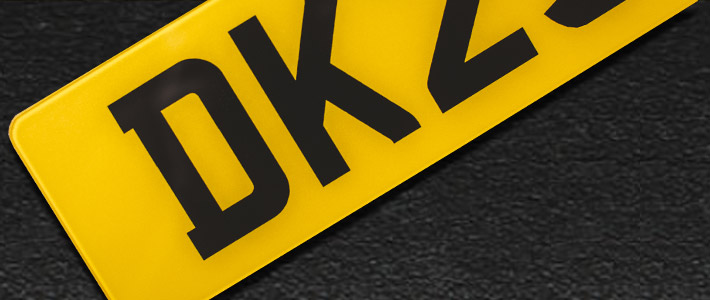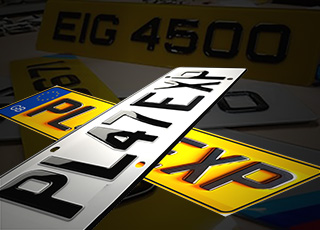Number plates are required to be displayed on all vehicles that use UK roads. It’s one of the most crucial components of the car since it makes it easier for other drivers and law enforcement to identify a vehicle, especially if it has been engaged in an accident, a crime, or a theft. In essence, number plates are designed to improve the security and safety of UK roads.
The Driver and Vehicle Licensing Agency has developed tight standards and regulations for displaying number plates so that they can be easily identified and recognised for their purpose. As you can see, vehicles are required to display a white number plate in the front and a yellow number plate in the rear. Many of you might not understand why these colours were chosen, and some of you might feel that the colour combinations can negatively affect the overall aesthetic of a vehicle.
Indeed, a number plate can have an impact on how the vehicle looks overall, but the white and yellow number plate that the government has mandated is extremely important.
Colours of UK Number Plates
The rules set by the Driver and Vehicle Licensing Agency for displaying number plates indicate that all number plates should be made from a reflective material and should display black characters on a white background for the front plate and display black characters on a yellow background for the rear plate of the vehicle. These are the only colours allowed and no plates should have any background patterns.
Not following these rules will result in penalties and fines that can reach up to £1000.
Why Are Number Plates White and Yellow in the UK?
Given how number plates function, the DVLA’s tight regulations on number plate display are primarily intended to ensure that the plates are visible and clear so that the vehicle can be identified no matter the weather or the time of day.
Rear Number Plate
The rear number plate of every vehicle must have a yellow background with black characters. This is because yellow has the highest contrast with black compared to the majority of other colours. Yellow is also a fantastic colour to use with reflective materials as it creates contrast and makes the black letters on the number plate stand out.
During the nighttime, drivers behind your vehicle can clearly see your rear number plate because the front light of the vehicle behind you will show on the reflective plate material. As a result, rear number plates are still visible to other road users and authorities, including the Automatic Number Plate Recognition (ANPR) Cameras, whether it is nighttime or during bad weather.
Front Number Plate
The front number plate should have a white background with black characters. Front number plates are pretty obvious during the day because the black characters are clearly highlighted. During the nighttime, the white background on the reflective material of the number plate helps avoid reflectors or persistent front lights from obscuring your front number plate.
Even with your headlights on, your front number plate is still visible to anyone in front of you. Moreover, the black writing on the white backdrop is also more visible even in bad weather thanks to the reflective material of the plate, making it the ideal colour for a front plate.
Bottom Line
In the UK, the colour of the number plate is intended to increase its visibility and readability at all hours of the day and in all weather conditions. It might not be the best colour for enhancing a car’s appearance, but it increases the security and safety of both your car and those around you while you travel on UK roads.
DVLA’s rules and regulations are not intended to be an inconvenience but rather to aid and benefit all road users. As a result, it is crucial to understand the laws regarding number plates and abide by them. Abiding by the rules and regulations will eliminate the risk of you being fined but also allows you to contribute to keeping the UK roads safe and secure.



